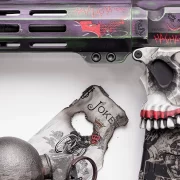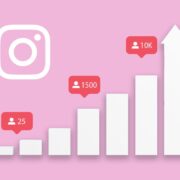Many classical music snobs will turn their nose up at pop music and EDM. They’ll claim electronic music production is brainless; that any moron with a computer could pump out a Top 40 hit in an hour. Then, you sit them down in front of an electronic music producer’s set up with their Digital Audio Workspace open and give them that hour to churn out something chart-topping.
If we’re being generous, they’ve gotten one halfway catchy loop done in that hour. That’s assuming they could figure out how to get the interface to work.
Like digital art to the artists of yore, people incorrectly disparage electronic music production as “cheating” or “too easy”. This affects even those who want to get started in the field, as it makes things seem simpler than they are. With our guide, you can better understand what you need to produce good electronic music.
Don’t Neglect Your Theory
Hey, we get it. Music theory is kind of a drag to learn, even for music majors. (Source: The writer was a music major, and remembers classmates despising theory classes above all else.) However, while it’s not a strictly necessary skill to get started in electronic music production, it helps you stand out.
Think of music theory as the grammar to music’s language. Like in creative writing, you can get by without complete knowledge of grammar rules, but when you break the rules, it will be clear you don’t know them. You have to know the rules of the language to know how and where to break them.
You don’t need music theory to be a music producer, but it will absolutely help you become a better one.
Tools of the Electronic Music Production Trade
Any electronic music producer has a host of tools at their disposal. You don’t necessarily need all of these right out of the gate to get started (plenty of music producers got their start on a digital audio workspace, a blown-out speaker, and a dream), but they will give you more options in terms of what you can produce from home. Here are just a few of the many things you will need:
Capable Computing Power
Producing music is a RAM-heavy task. Whatever machine you use needs to have the capability for real-time playback of your current project over and over, without skipping, stuttering, or otherwise faltering. You can’t very well get a smooth, balanced mix or sound if you’re constantly fighting with your system to listen to a single measure.
16GB of RAM is the general standard most producers use in their setup. If your current computing power is lacking, it may be time to search websites like hp.com, amazon.com, or lenovo.com for a replacement. Trust us, you’ll be glad that you have the extra power.
Keys, Pads, and Synths
Let’s talk peripherals. Here’s where many beginner EDM producers blow their budget when they don’t have to. We understand that it’s nice to have the same tools as the pros. However, what good is spending hundreds, if not thousands, of dollars on a keyboard you don’t know how to play, a drum pad you struggle to use, and thousands of virtual synth waves that you never bother with?
Now, this is not to disparage the benefits of each of these tools. Let’s take a moment to discuss the advantages of each below.
Key Advantages of a Piano Keyboard
If you know how to play piano or keyboard, having that instrument attached to your computer will simplify your composition process by a lot. It will let you play and improvise on the instrument, save those sound waves in the computer as data, and clean them up in post. Depending on the size and quality, a keyboard will run you between $100 and $1200.
The Benefits of a Drum Pad
Drum pads are a handy tool to have, as you can save percussion sounds you use on a regular basis to the buttons. This makes it easy to create in-depth drum lines that otherwise would take hours of hunting to compose. However, when drum pads can cost between $200 to $800, that may not be an investment you can make right away.
Finding the Right Virtual Instruments
This is more of an issue in soundtrack or classical music production than EDM, but your virtual instruments can make or break how your music sounds. Unless you love writing Chiptune music, cheap-sounding midis are not the way to go. While you can find free or low-cost VST files online, if you want the good sounds, you’ll have to pay big bucks for them. It’s not unheard of to see high-quality orchestral or choral synths run $400 or more.
Check One, Two? Check One, Two?
Some electronic music works without any vocals. Many EDM producers will use existing singing loops or samples to flesh out their songs. However, if you or a friend of yours want to drop your own voices into the cut, you’ll need a high-quality microphone to do so. You can get by on a cheap USB microphone at the start, but eventually, you will need to invest in a traditional microphone that can connect to an external mixer.
Soundproofing and Listening Gear
Unless you want your neighbors to bang on your door, not-so-politely asking that you keep your racket down, you’ll want to invest in some kind of soundproofing. Acoustic foam tiles can be purchased online for relatively cheap to help prevent too much sound from echoing or escaping.
In addition, your AirPods are not the ideal tools for EDM production. You’ll want to invest in a solid, wired pair of headphones specifically crafted for music producers. These headphones are designed from the ground up to let you work at maximum efficiency and hear all the subtleties of the music you’re creating.
Getting in the Mix
Whether you have external instruments or not, you’ll need either a physical or virtual mixer. Good mixing of a song can be the difference between a chart-topping masterpiece and Baby’s First SoundCloud Rave. Mixing is a difficult skill that you have to learn by ear, but you can find guides or tutorials online to help you figure it out.
You’ll Be Raw Without Your DAW
The DAW is the heart of any electronic music production setup. DAW, or Digital Audio Workstation, is your heart and soul, your bread and butter. It’s where all the magic of creation, editing, production, and rendering happens. Your DAW simplifies hundreds of tasks into an easy, what you see is what you get format.
There are many DAW options available for beginning music producers, both free and paid. Let’s examine the best of each below.
Best Free DAWs
If you’re a beginning music producer on a budget, you’ll want to find the cheapest option you can. You can’t get much cheaper than free, so without further ado, here are the best free DAWs around:
- GarageBand: Apple fans are in luck, as their computers come with a free DAW ready to access
- Audacity: The OG of free DAWs, its only drawback being the lack of a MIDI sequencer
- LMMS: A fully-featured, open-source DAW that makes it easy to create drum sequences
- Cubase LE: The lite version of Cubase, able to record 24 VST tracks or 16 audio tracks
While some of these options may have limitations, most of them are full-featured and ready to roll out of the installation box. However, if you need the whole kit and kaboodle ready from the start…
Best Paid DAWs
DAWs can get pretty pricey when you look at some of the major brand names, but each one is well worth the price of the investment. Here are some of the most popular choices available:
- FL Studio: AKA “The DAW Formerly Known As Fruity Loops”, a standard once used by the YouTube channel Epic Rap Battles of History
- Steinberg Cubase: One of the industry old-timers, Cubase has been a DAW of choice since 1989
- Cockos Reaper: One of the cheaper paid options, Reaper nonetheless offers a wealth of features to its users
- Ableton Live: This DAW is optimized for seamless live performances, making it a DJ’s best friend
There are many more options than this if you search online, but these are some of the most well-reviewed DAWs for music production that you can purchase.
Getting Your Music Out There
Once you have a new electronic music hit written, how do you get it out to the world? One of the most popular ways to start sharing your music is through the app SoundCloud. Many beginning EDM artists and rappers got their start on the app, only to get picked up by a larger studio when their sound went viral. You should also make it a priority to have an artist-specific social media account so that you don’t have to handle your music business on your main socials.
Let’s Recap
Getting into electronic music production is no easy feat, and can prove quite costly. However, whether you get all of the tools listed or just a few, take your time to learn your instruments and DAW back to front, and you can produce anything. If you found this article helpful and would like to read more informative how-tos, check out our blog daily for more content like this!





